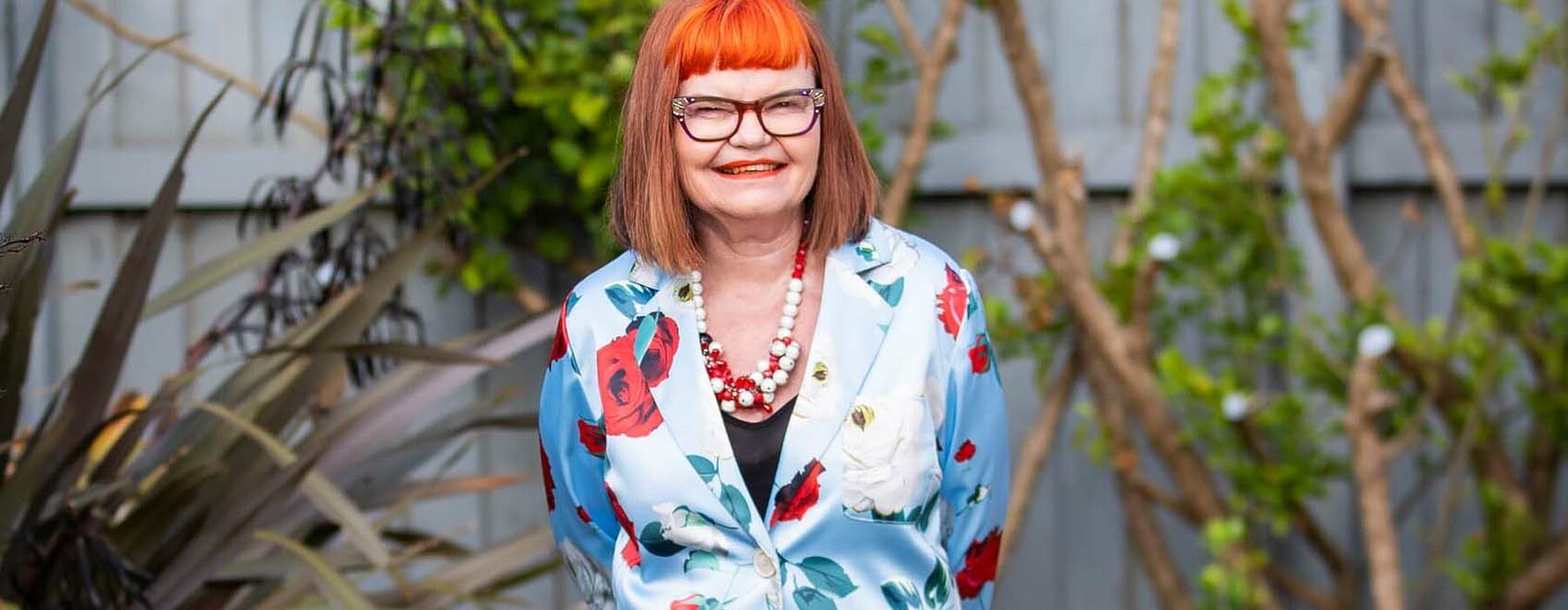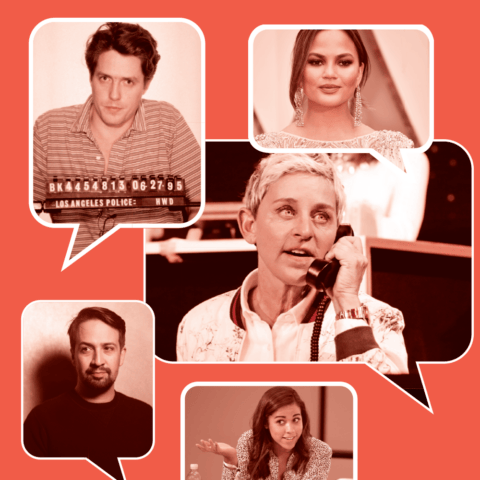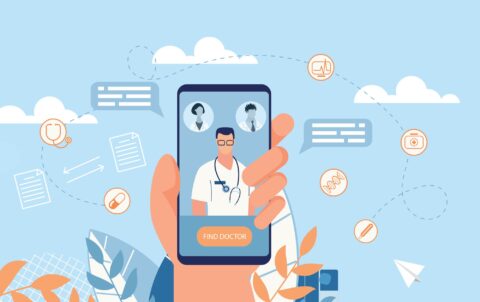If you believe eating disorders only afflict young women, think again, writes Sharon Stephenson.
If Cate Eaton’s life was a movie it would begin with the death of her father and end with an eating disorder.
In between there would be scenes with Cate leaning over the toilet, purging the food she’s just eaten, and the slow pan of the camera across her on a psychiatrist’s couch.
But we’re not in a movie: we’re in Wellington on a Monday morning, in a 1920s villa sandwiched between the ocean and a supermarket. It’s where Cate, 59, lives with her wife, Sue, whom she’s been with for 20 years, married for seven, and where she settles back into a squishy couch to talk about the disordered eating that has stalked her since she was a child.
Cate is softly spoken, articulate and bubbly, far from what I’d imagined someone who has to endure the double whammy of an ED and other assorted mental health issues would be like.
“Because I look okay and have kept my struggles to myself, people have no idea what I’m going through,” says Cate. “EDs are tricky things that are hard to spot and tough to treat. But the reality is they have one of the highest mortality rates of any mental illness.”
Not only is Cate a long-term ED sufferer, she’s also a member of that widely under-acknowledged cohort: mid-life disordered eaters. Because if your image of a woman with an ED is a teenager in the thrall of social media pressure to be stick thin, you need to adjust that picture. According to the International Journal of Eating Disorders, as many as 13 per cent of women over the age of 50 globally are affected by disordered eating.
Dr Roger Mysliwiec, co-founder of the New Zealand Eating Disorders Clinic in Auckland’s Freemans Bay, agrees with that figure.
“EDs such as anorexia and bulimia generally tend to appear early in life and are more frequently found in females than males,” says Dr Mysliwiec. “But they’re becoming increasingly common in mid-life with typically three types of sufferers – those who may relapse after years of recovery; those who encounter the disorder for the first time in their thirties, forties and beyond; and a third group who may have been preoccupied with food and weight for a long time but have never been fully symptomatic until now.”
Figures show that ED symptoms in women are most common during adolescence, fall between the ages of 25 and 34 and rise again from 45 to 54. In other words, peaks that coincide with puberty and perimenopause.
At the end of that scale, experts believe the extreme oestrogen fluctuations of perimenopause could be a key trigger for midlife EDs, with some women having a higher propensity to bulimia or anorexia due to fluctuating hormones.
Recent findings also show that EDs can be triggered by life changes. American clinical psychologist Margo Maine, co-author of the book The Body Myth: Adult Women and the Pressure to be Perfect, says entering a radically different life stage can mess with a woman’s sense of self.
“When you enter a different chapter or encounter speed bumps such as divorce, an empty nest, ageing parents or loneliness, that can cause emotional stress and behaviours such as binge eating. That, in turn, can give you a sense of control and momentary relief but it’s often followed by feelings of guilt and self-induced vomiting. If that cycle continues, it can become entirely habit-driven with people finding it hard to stop bingeing and purging.”
But whether the cause is hormonal, genetic or psychological, older women often find their EDs overlooked, or even applauded, by a society that values thinness and fears the weight gain that can come with age.
There is, says Dr Mysliwiec, a societal mind-set that avoiding ageing is good – 50 is the new 30, 70 the new 50 and, well, you get the idea. That pressure to stay young and slim can often put, or keep, older woman on the slippery slope of EDs.
And once you’re there, getting treatment can be difficult. “Women are often complimented on their weight loss so they might delay seeking treatment. It’s also important to be aware that eating disorders can be present even if the person is not underweight but is still engaging in restriction, compulsive exercising or self- induced purging. Their suffering is just as great.”
Having a ED in mid-life can, says Dr Mysliwiec, create a culture of shame. “Women can be embarrassed about struggling with what society often views as a teenage disorder, which can also lead to a reluctance to get help.”
But there’s a high cost to not seeking early and effective treatment: figures show that eating disorders kill more people than any other mental illness, and can also result in impaired brain
function, infertility, kidney failure, cardiac arrest and dental failure. Older women are thought to be particularly at risk for damage to the heart, brain and bones.
“When you’re younger, your body can withstand much more,” says Dr Mysliwiec. “But EDs can have a greater impact on older bodies which don’t bounce back as quickly.”
Cate knows all this. She’s read the research, understands enough about what bulimia is doing to her body and mind to fill several textbooks. But still she can’t stop.
“It’s a control thing – control over my body,” she says with a sigh so loud you probably heard it at your place. “I’ve had years of counselling but I still purge a few times a week. Doctors tell me I’m at a healthy weight now but to me that means that I’m fat!”
Cate isn’t the kind of bulimic who eats a pint of ice cream, a tub of fried chicken and a bar of Whittaker’s finest before flushing it down the toilet.
“I’m definitely not that kind of binger. For me it’s about feeling full after dinner. I’ll eat dinner – and we eat healthily – but then feel full and know I’m not going to be active in the evening to burn it off. So I have to get rid of it.”
For Auckland-born Cate, disordered eating started at the age of five when her father died. “Mum did her best but it was hard for her as a single mother. I felt lost and alone and wanted to be with Dad in heaven.”
Two years later, a chance comment from a family member about Cate’s “chubby cheeks” set her on the ED path.
“I decided at 7 that I would never get fat so started restricting what I ate.”
In London, in her twenties, bulimia reared its unlovely head with Cate dubbing it “a good way to get rid of calories”.
Coupled with the depression that haunted her for years, it led to suicidal thoughts.
“One night I had lots of pills spread out in front of me. Luckily, I ended up ringing Mum and coming back to New Zealand.”
There were therapists but they never stuck. Marriage to a man and a baby only made things worse.
When Cate was 48, she was admitted to a Wellington ED clinic where she spent five months dutifully consuming three meals a day and doing nothing more strenuous than lifting a cup to her lips.
“They were really strict about finishing meals and not exercising.”
It was where she had the first of many light-bulb moments. “A therapist drew a pie chart which showed that I’d spent three-quarters of my life suffering from an ED. Seeing it so starkly represented like that was a turning point, because it helped me to see myself as a whole person, not just someone with an ED.”
Since then, Cate estimates the longest she’s been purge- free is a year. But the disease has certainly taken its toll: she suffers from “gerd”, a reflux disease which causes a burning sensation in her throat that even daily pills can’t dull, her teeth enamel is eroded and her vocal cords have been ravaged. “I’ve well and truly stuffed up my body.”
In February, Cate turns 60 and is pegging that as a reset.
“I’m creative and have so much to offer the world. I want to work more [she currently works two days a week in a pre- loved clothing store] and take up Pilates and aqua aerobics. I’m also writing a book about my story and have 87,000 words written so far. But in order to do this, I need to heal myself and stop the purging.”
Cate credits ongoing therapy, mindfulness apps and her wife, who she met at a psychiatric ward, with putting her on the path to recovery.
“It’s about learning to forgive others and forgive myself. Sue saved me from a life of darkness and loves me like no one has ever loved me. I am truly blessed.”
The ongoing battle for recovery
“You don’t need a science degree to know that surviving on one apple and two crackers a day isn’t good for either your physical or mental health,” says Rachel Richards*.
“I actually had a Bachelor of Science and a masters degree – as well as a few other letters after my name – but that didn’t stop me from developing anorexia in my early forties.”
The now 48-year-old Auckland researcher admits she knew it was “wrong and damaging and all the bad things”.
“But for many years I had this voice in my head telling me I could only be certain things if I was skinny.”
Certain things? “You know – prettier, happier and more successful.”
To find the source of Rachel’s ED you need to reach back to her childhood when her mother called her fat.
“She didn’t mean it,” says Rachel. “It’s just that she was tiny and one school holidays when I was about 12 I tried on her wedding dress for a laugh and could barely fit into it.”
As hot tears of shame stung her cheeks, Rachel promised herself she’d find a way to fit into that dress.
What followed was years of restricted eating, bulimia and extreme diets that didn’t work. “There were lots and lots of low times and I don’t really want to revisit that darkness, but let’s just say it took a great deal of therapy for me to learn to love myself and my body.”
When she was 25, Rachel was able to put what she calls the “ED monster” back into its box.
For a while, it stayed there. Life was good: she married, gave birth to a daughter and “bought into the suburban white-picket-fence fantasy”.
But when her marriage ended a decade later, it pulled the ED triggers. “I was a single mother who’d lost her husband, home and job because I now had to be my daughter’s main caregiver. I’d gone from having everything to having nothing. The only control I had was over what I put into my mouth. The less I ate, the stronger I felt so the old habits crept back in. At my lowest I was around 6.5 stone [41kg].”
For her 42nd birthday, Rachel received a weekend in Queenstown and an official anorexia diagnosis.
“My doctor told me I had to start being honest with myself and admitting I had a problem. It was so hard reaching out because I was embarrassed by my ED. I thought the doctors and therapists would think I was vain and stupid because in a way EDs are such a first world problem, especially when you’re old enough to know better!”
By pulling every string possible, Rachel’s GP was able to get her into a residential programme where she began to unpack her relationship with food and the changes going on in her life.
“My marriage breakup and the fallout from that undid something in my brain. With therapy and a lot of self-work, I’ve realised that while I started out wanting to be thin enough to fit into Mum’s wedding dress, this disease is really about control. It’s probably why I was able to ignore the damage I was doing to my body. I’m a scientist, for God’s sake – I knew how unhealthy my actions were but I still kept doing it.”
Fast forward to today and Rachel is ED-free. She’s finally learned how to switch off the “judgy voices” that tell her she’s not skinny enough, pretty enough or just enough. Now, her focus is on shielding her daughter from the same fate.
“The ridiculous body ideals women are faced with terrify me and with social media it’s only getting worse. I don’t want my daughter to go through the ED hell that I did. I want her to have a healthy relationship with food and know that she is loved no matter what her size.”
*Rachel Richards is not her real name.
Where to go for help
- Eating Disorders Association of New Zealand (EDANZ), an association established to provide support and education for parents and caregivers of people with eating disorders.
- Health Navigator, a website with reliable and trustworthy health information and self-help resources.
- Canopy Eating Disorders Support Services (Canopy), New Zealand’s first eating disorder-specific peer-to-peer support, both online and in person, community-centric service. It makes practical support affordable and accessible.
Books to read
- Rehabilitate, Rewire, Recover! Anorexia Recovery for the Determined Adult by Tabitha Farrar
Tabitha had anorexia for 12 years and provides an insight into why an eating disorder is “switched on” and what is needed to switch it off. She now works as an ED coach. - Binge Control by Cynthia Bulik
A compact guide to understanding binge eating disorder (BED) and the treatment options. - Fat is a Feminist Issue by Susie Orbach
First published 20 years ago, its treatise that fat isn’t about food but about protection, sex, mothering, strength, assertion, anger, love remains as relevant as ever.








